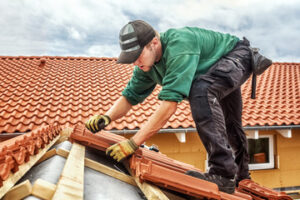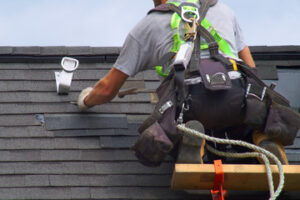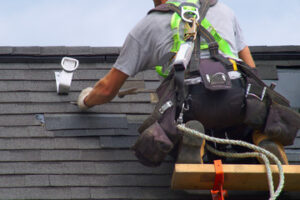Natalie Wood Death stunned Hollywood. The coroner’s report concluded she slipped into the dinghy while trying to get in and drowned. However, there is much speculation and innuendo surrounding her death.

Co-produced by her younger sister Lana, this documentary delves into her life and her tragic death. It examines new witnesses and reveals attempts by Wagner, Walken and Davern to distance themselves from blame with magazine interviews and books.
Natalie Wood was an American icon. Her acting career took off at a young age, and she worked with legendary directors like John Ford, Elia Kazan and others. Her romantic conquests included Warren Beatty, Richard Gregson and Robert Wagner (her husband at the time of her death). She had two children with Gregson and one with Wagner. She was also an activist, working for civil rights and environmental causes.
Then, in 1981 at the age of 43, she went on a yachting trip off California’s Catalina Island and drowned. For decades, her cause of death was a mystery. But now authorities believe that her death was a homicide.
Investigators say that her body was covered in bruises and a swollen left cheek. They have also uncovered evidence of sexual assault. They are now questioning her ex-husband, actor Robert Wagner. The investigation is based on new witness statements that have emerged.
Authorities have reopened the case because they believe that new witnesses have stepped forward with information that does not jibe with the official story of what happened. The new witness, boat captain Dennis Davern, said that he and Wagner fought before she slipped off a dinghy into the water. He told NBC News that he had lied to police in the initial investigation of Wood’s death. Wagner has refused to speak to investigators since the case was reopened.
In the initial investigation, investigators believed that she slipped off of the yacht and struggled to get into a rubber dinghy. The dinghy bore scratch marks on its side that seemed consistent with this theory. But in a 2013 report, the coroner’s investigators noted that nail clippings were not taken from Wood’s body to determine if they were made by her and that the dinghy was no longer available to be examined. The investigators now think that she probably died soon after she entered the water and that the dinghy did not play a role in her death.
The story behind the investigation is complicated. Several Hollywood fixers—including Peter Pitchess, who was a Los Angeles County sheriff at the time of the incident—had cozy relationships with Wagner and others in the film industry. They were able to influence the investigation and the official cause of death.
Causes of Drowning
Natalie Wood’s mysterious death at the age of 43 in 1981 left behind a lingering mystery. While it is widely believed that the actress fell off her boat and drowned, many question whether foul play was involved.
On the Thanksgiving weekend of that year, Wood was on a boating trip aboard her husband Robert Wagner’s 60-foot yacht, Splendour, off the coast of California’s Catalina Island. She was joined by her actor co-star Christopher Walken and the boat’s captain, Dennis Davern.
According to her sister, Lana, Wood was terrified of water. This, combined with her heavy drinking on the night of her death, makes it highly unlikely that she slipped off the boat and into the water. She also had bruises on her body and a swollen cheek, which would indicate she was the victim of an assault.
In a 2011 interview, Davern told NBC News that he and Wood had argued on the boat before she went to bed and slipped into the water. However, he has refused to talk to investigators since the case was reopened in 2011, and he has not been arrested for any connection to the actress’s death.
A yacht’s crew members have remained silent on the matter for decades, but new information has recently emerged that could shed light on the circumstances surrounding Wood’s disappearance. In particular, the authors of a 2012 book titled Drowning in Secrecy examine forensic evidence including never-before-seen photos of Natalie’s autopsy report, revealing that the bruising and other injuries were likely caused by an assault. They also highlight the glaring discrepancies between the initial statements made by Wagner, Walken and Davern and conclude that a cover-up of the truth is at play.
In addition to the forensics, the authors reveal eye-opening facts about lead detective Duane Rasure’s actions and conduct in the original investigation. They also provide details on a directive that appeared in the file from Sheriff Pitchess to his investigator, indicating that there was a clear attempt to close the case as an accident. They also expose a series of inconsistencies between Wagner’s and Walken’s accounts of what happened the night of the incident, and show how the Los Angeles County coroner misinterpreted the evidence and changed the cause of death to undetermined causes.
Symptoms of Drowning
Actress Natalie Wood’s mysterious death off the coast of Santa Catalina island in 1981 remains one of Hollywood’s most enduring mysteries. She starred in such classic films as Rebel Without A Cause, Splendor in the Grass and West Side Story and was beloved by generations of fans. Her death was officially ruled an accident, but conspiracy theories abound and it is still unclear what happened to the star.
On the evening of her death, Wood was aboard her husband’s yacht with her Brainstorm co-star Christopher Walken and the boat’s captain, Dennis Davern. At some point during the night, a fight broke out between Wagner and Wood over something trivial. The argument became heated and they argued in front of Davern, who told police that Wood took off in her dinghy afterward. When she didn’t return, Wagner went looking for her but found nothing. He then sent Davern to look in the water but refused to turn on his boat’s floodlights or call for help, as he didn’t want to raise suspicion that they were aground.
When a person drowns, they usually don’t thrash around as is depicted in many movies and television shows. The reason is that the victim has already expended all their energy trying to keep their head above water and may have been unable to shout for help due to a spasm of their upper airway or larynx. The spasm then relaxes, allowing water to pass through the throat into the trachea and then lungs.
After the actress’s body was discovered, authorities concluded that she had accidentally fallen overboard from her own dinghy and had been trapped in the water for several hours. However, investigators also noted that there were fresh bruises and abrasions on her body and that she looked as though she had been assaulted. The investigation was reopened in 2011 when Davern came forward and confessed that he had fought with Wood just before her death. Detectives told 48 Hours that over 100 tips have been received since the investigation was reopened and that they have made progress.
Signs of Drowning
The 1981 death of Natalie Wood, who was 43, off the coast of Santa Catalina Island, has always been one of Hollywood’s most enduring mysteries. Wood had starred in some of the most beloved films of the era, including Rebel Without a Cause, Splendor in the Grass and West Side Story.
The harrowing details of her death made headlines around the world and, for decades, the cause of the actress’s tragic end has been debated. Her cause of death was ruled accidental drowning, but the circumstances surrounding her sudden and mysterious disappearance remain murky to this day.
Wood was last seen alive on Thanksgiving weekend in 1981, sailing aboard her husband Robert Wagner’s yacht with her Brainstorm co-star Christopher Walken and the boat’s captain, Dennis Davern. A few days later, her body was found floating in the water off the coast of California’s Catalina Island, about a mile from her vessel.
The day before she was discovered, Wood and her family had gone to a restaurant in Two Harbors called Doug’s Harbor Reef. The restaurant owner told police that the group drank and that at some point a fight broke out between Wood and her husband Wagner, who was also acting on the boat.
It’s unclear what happened to Wood that fateful night, but she never returned to the yacht. Her body was pulled from the water the following morning wearing a flannel nightgown and a down jacket. She had bruises on her body, and scratch marks were found on the rubber dinghy that was recovered from the water.
Despite speculation that the bruises and scratch marks were caused by a struggle, investigators concluded she simply fell off the boat and into the water. Her autopsy report also noted she was not drunk at the time of her death.
The case took a new turn this week when Los Angeles County Sheriff’s officials announced 87-year-old Wagner, who was married to Wood twice, is a person of interest in her death. His lawyer didn’t return a message left for him at his St. Augustine business on Friday.








